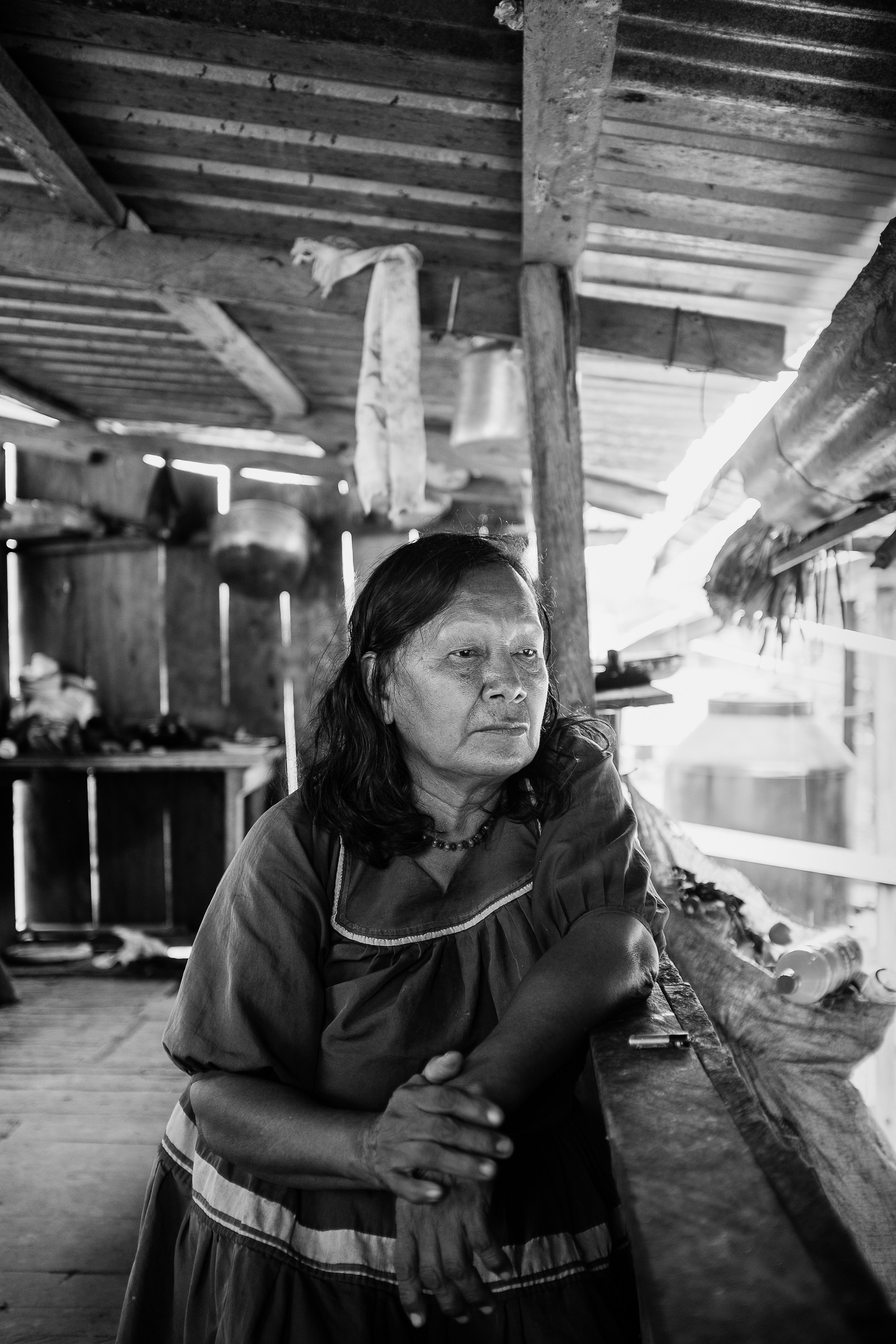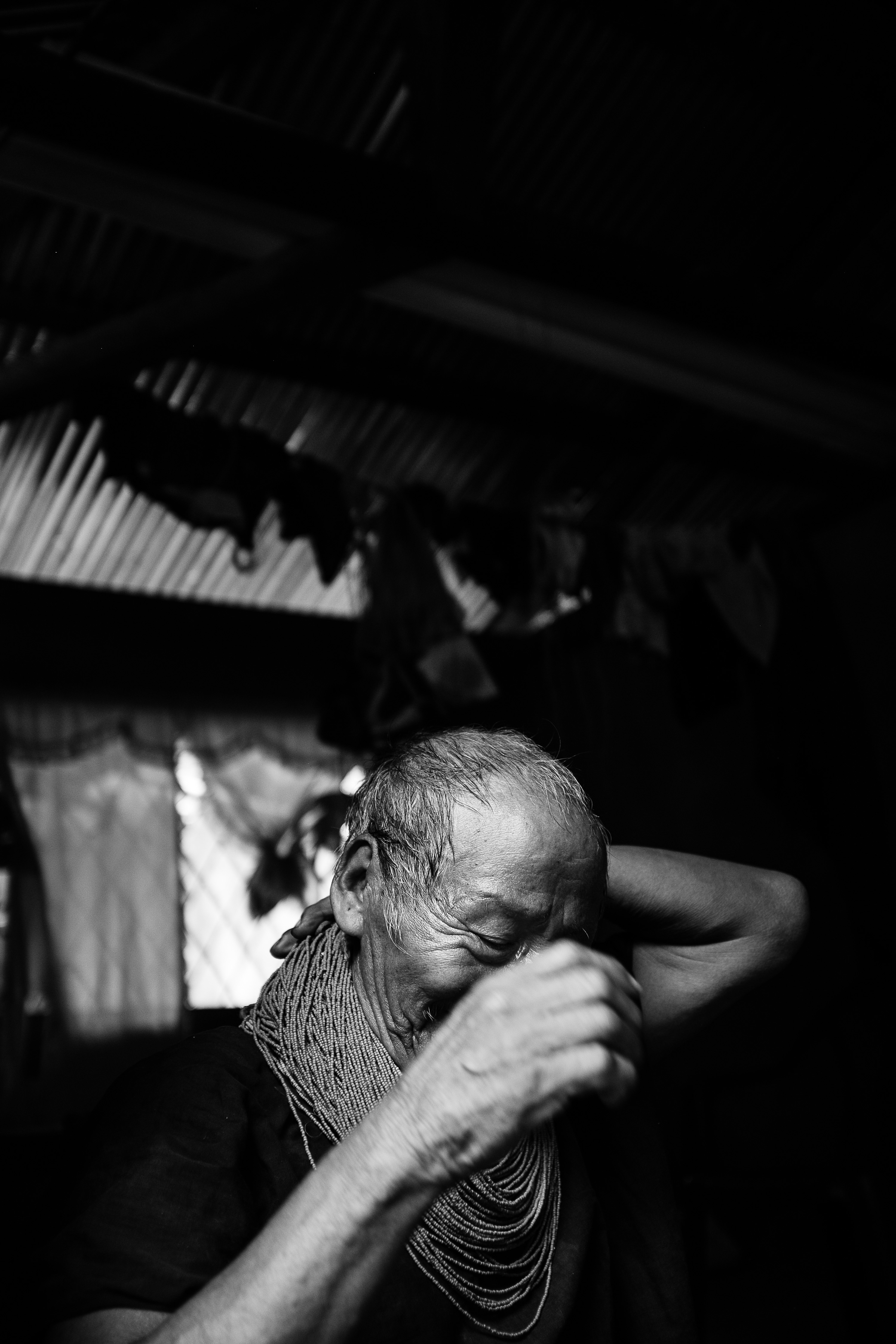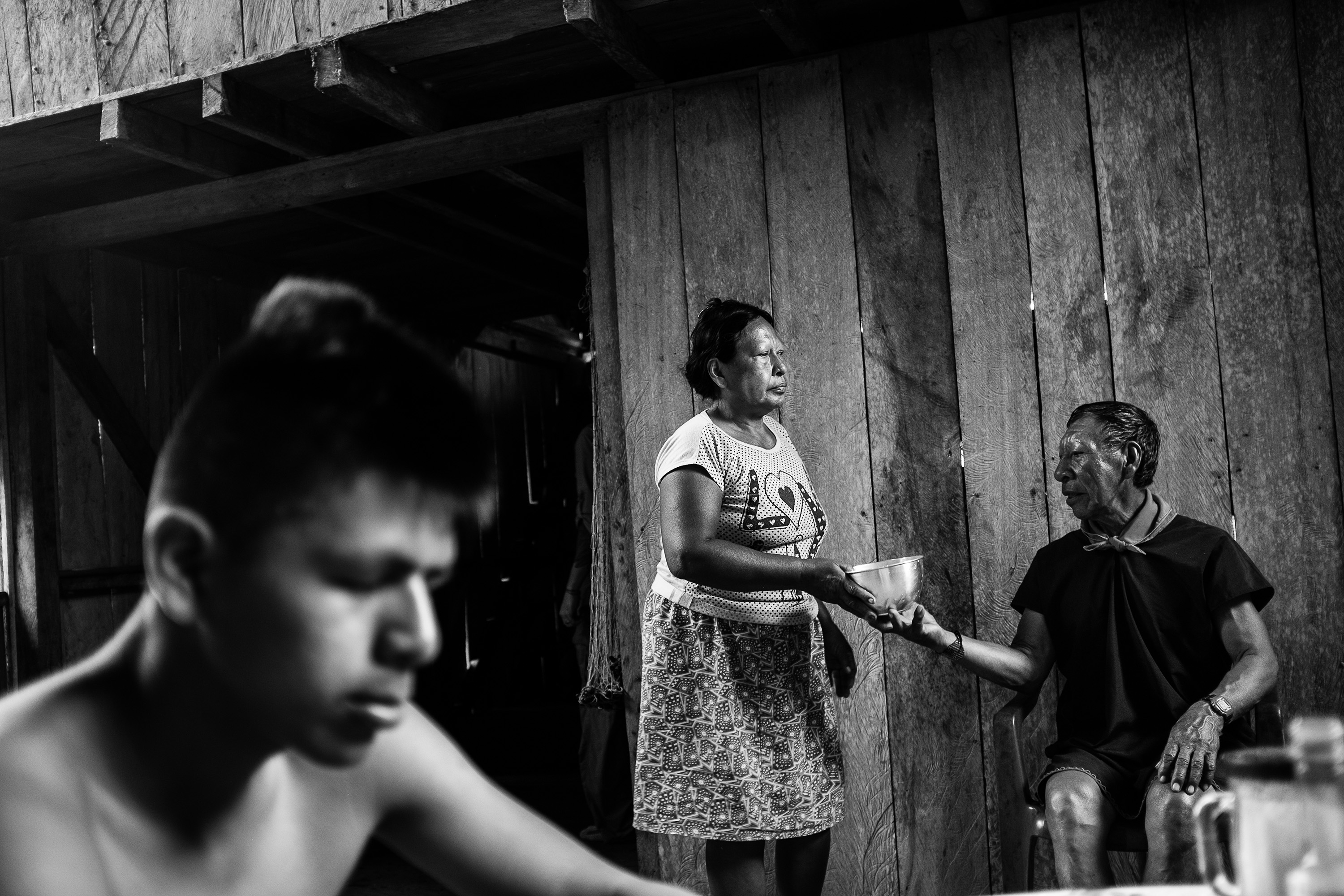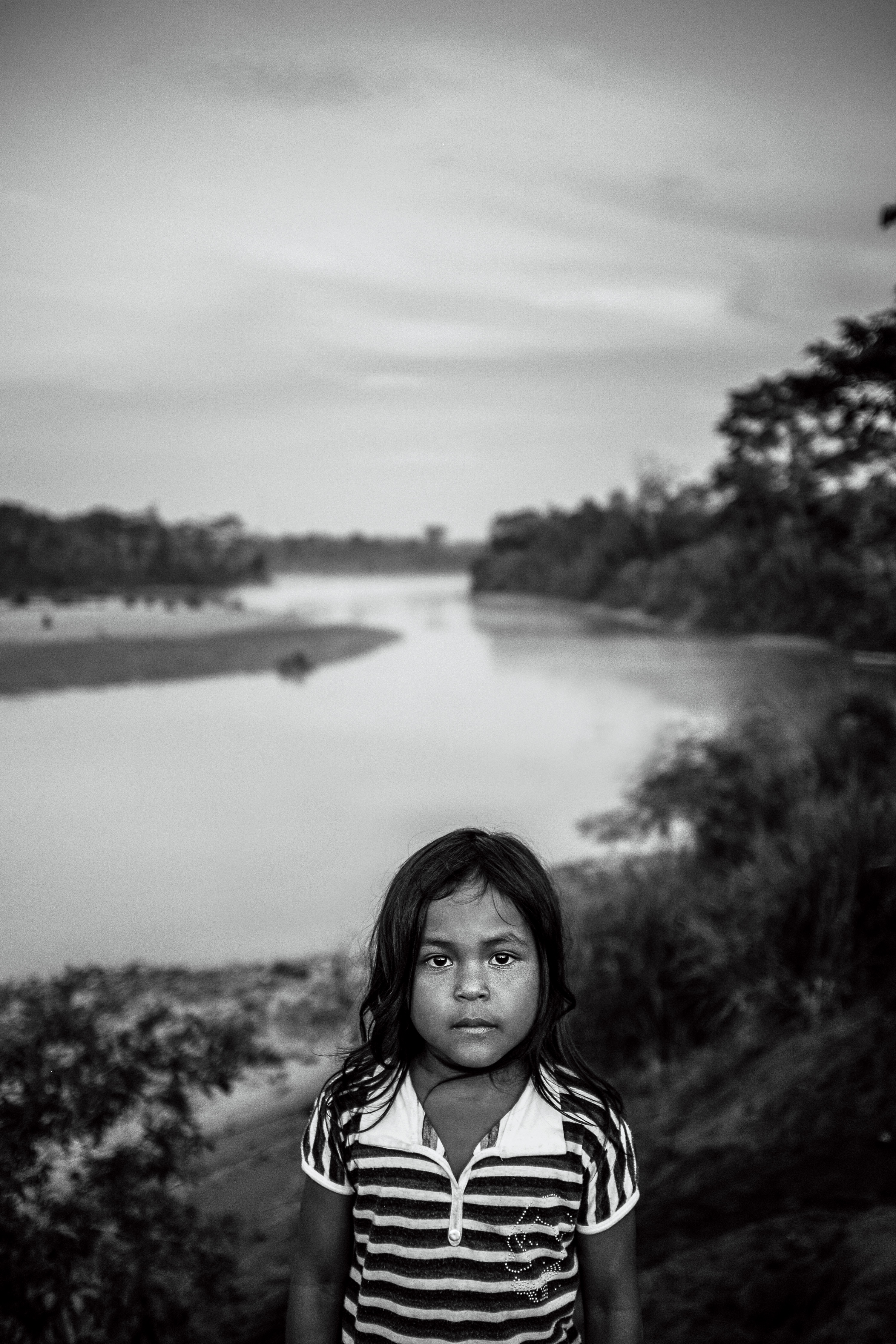The Aguarico river in Ecuador is a symbol of life for the Cofán people, but a legacy of contamination reflects a less hopeful future for the tribe.
Just south of the Colombian border in eastern Ecuador, amid towering forests and the pulsing Aguarico River, lies the indigenous Cofán community of Dureno. When the Spanish conquerors landed in western South America in the first half of the 16th century, there were as many as 30,000 Cofán people living in the region. In 2014, Ecuador’s Cofán population was estimated to be around 1,400; there is also a small population living across the border in Colombia. The Cofán have suffered the same traumas as many Native Americans: invasion, enslavement, missionization, and epidemic disease.
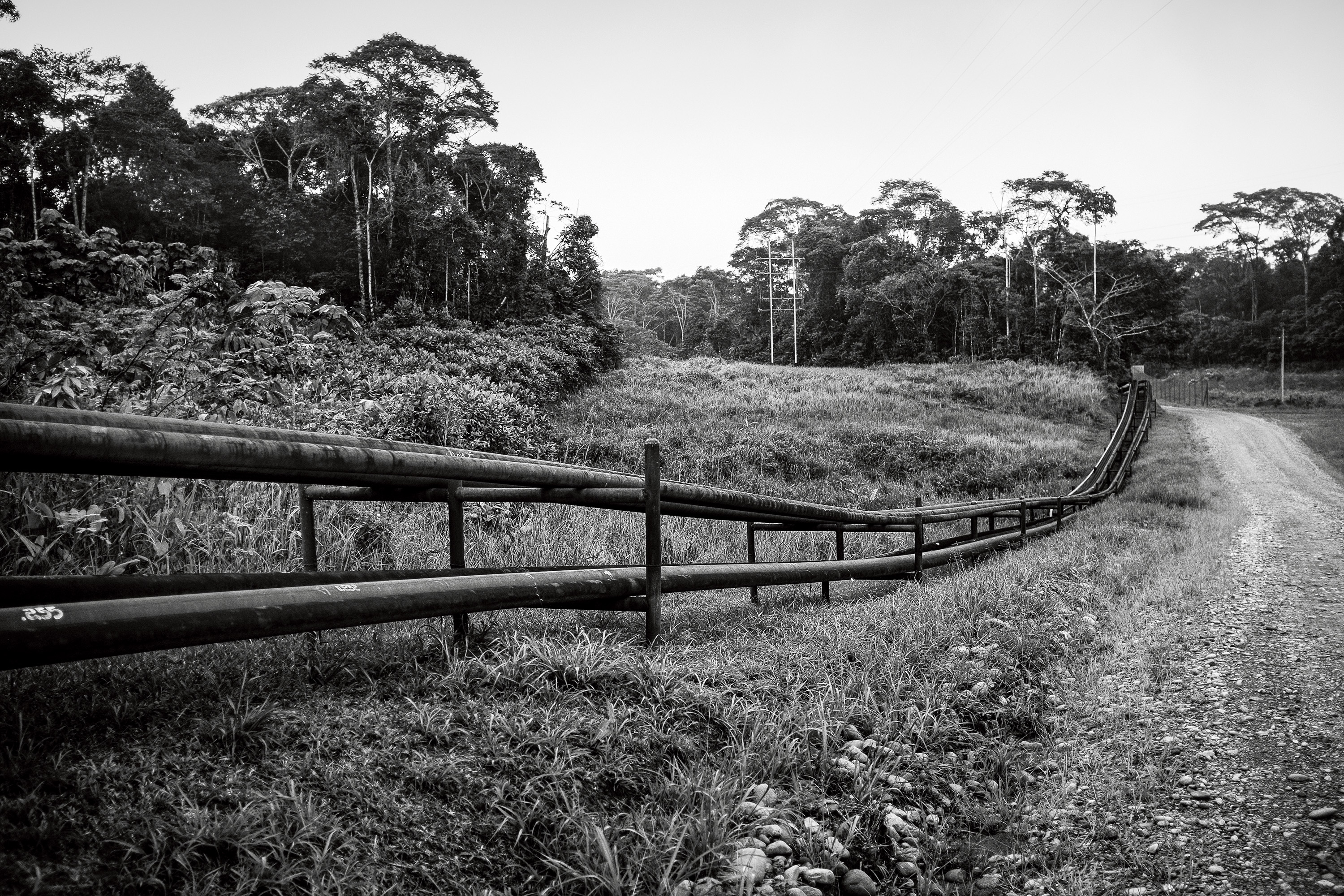
(Photo: Bear Guerra)
In the 1960s, one of the West’s most notorious exports came to the Cofán homeland: the oil industry. In 1967, the Texaco Petroleum Company discovered millions of barrels of crude beneath Dureno and the surrounding Lago Agrio region. By 1972, Texaco was sending crude from Cofán land over the Andes to a port on the Pacific, where it was loaded into tankers and carried to refineries across the world. The Ecuadorian government welcomed Texaco and other oil companies at the time, and profited from their presence. In 1992, Ecuador’s state oil company completed a takeover of the infrastructure Texaco built and has run it ever since.
Small pipelines join the oil wells that surround Dureno to the Trans-Eduadorian Pipeline, which brings crude from Cofán territory over the Andes to a Pacific port.
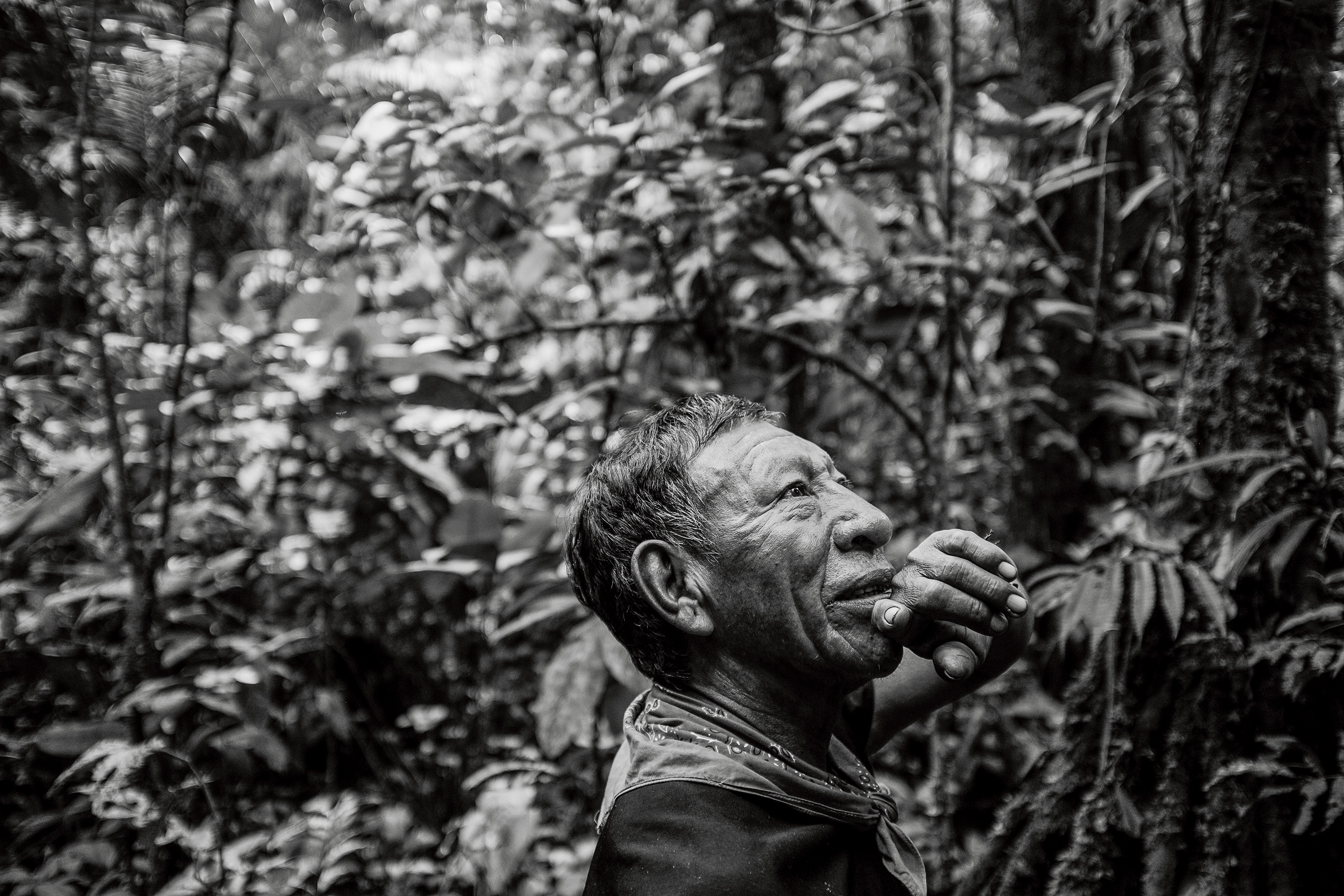
(Photo: Bear Guerra)
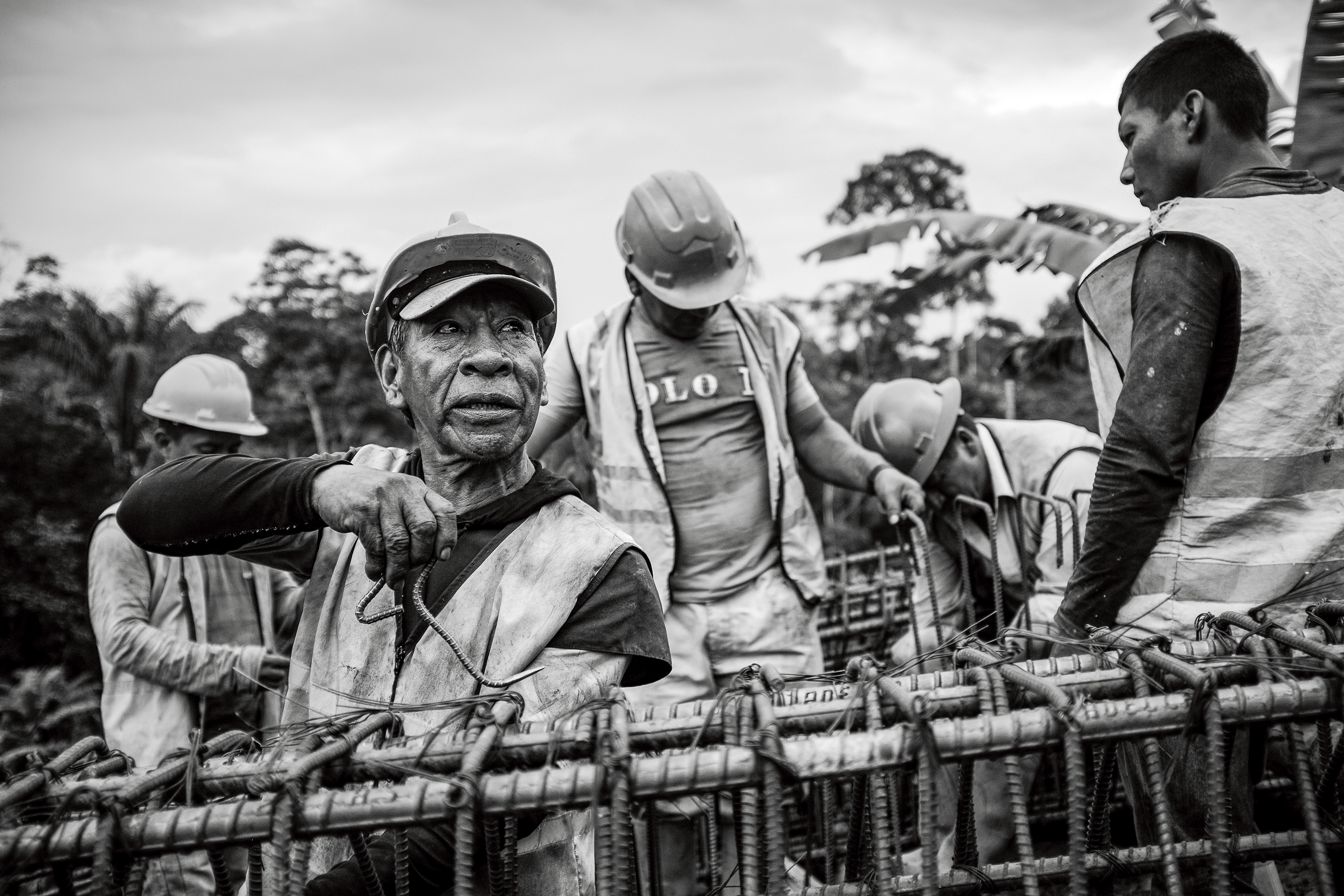
(Photo: Bear Guerra)
Today, journalists, students, and environmental activists visit Dureno to see what oil has done to a native people and their rainforest homeland. They take pictures of the wells, waste pits, and gas flares that surround the community. The guides who accompany them speak about the pollution, deforestation, and illnesses that threaten the Cofán’s future. To the outside world, Dureno is a poignant case study of cultural loss and environmental destruction.
Robert Criollo (left) searches for small catfish in the Aguarico River. Although the forests and rivers around Dureno no longer provide enough animal protein to satisfy the Cofán dietary needs, they are still essential to Cofán subsistence. The people of Dureno eat both store-bought and gathered foods every day. They still consider themselves to be “forest dwellers,” even though wage labor and outside commodities are now important parts of their way of life. Donald Moncayo (right) a non-indigenous settler who leads “toxic tours” in Cofán territory, shows visiting journalists what he says is toxic sludge from an abandoned oil-well waste pit.
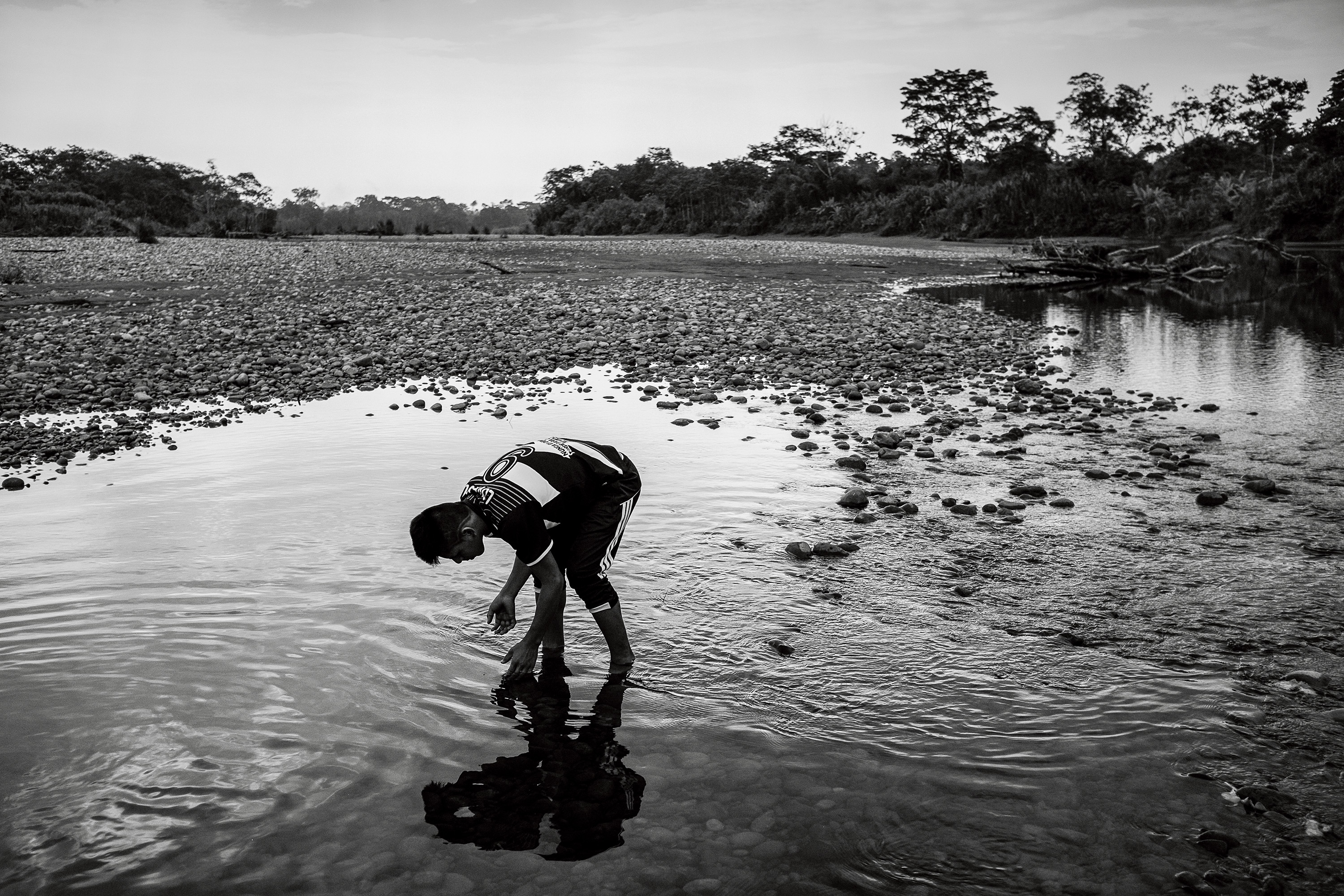
(Photo: Bear Guerra)
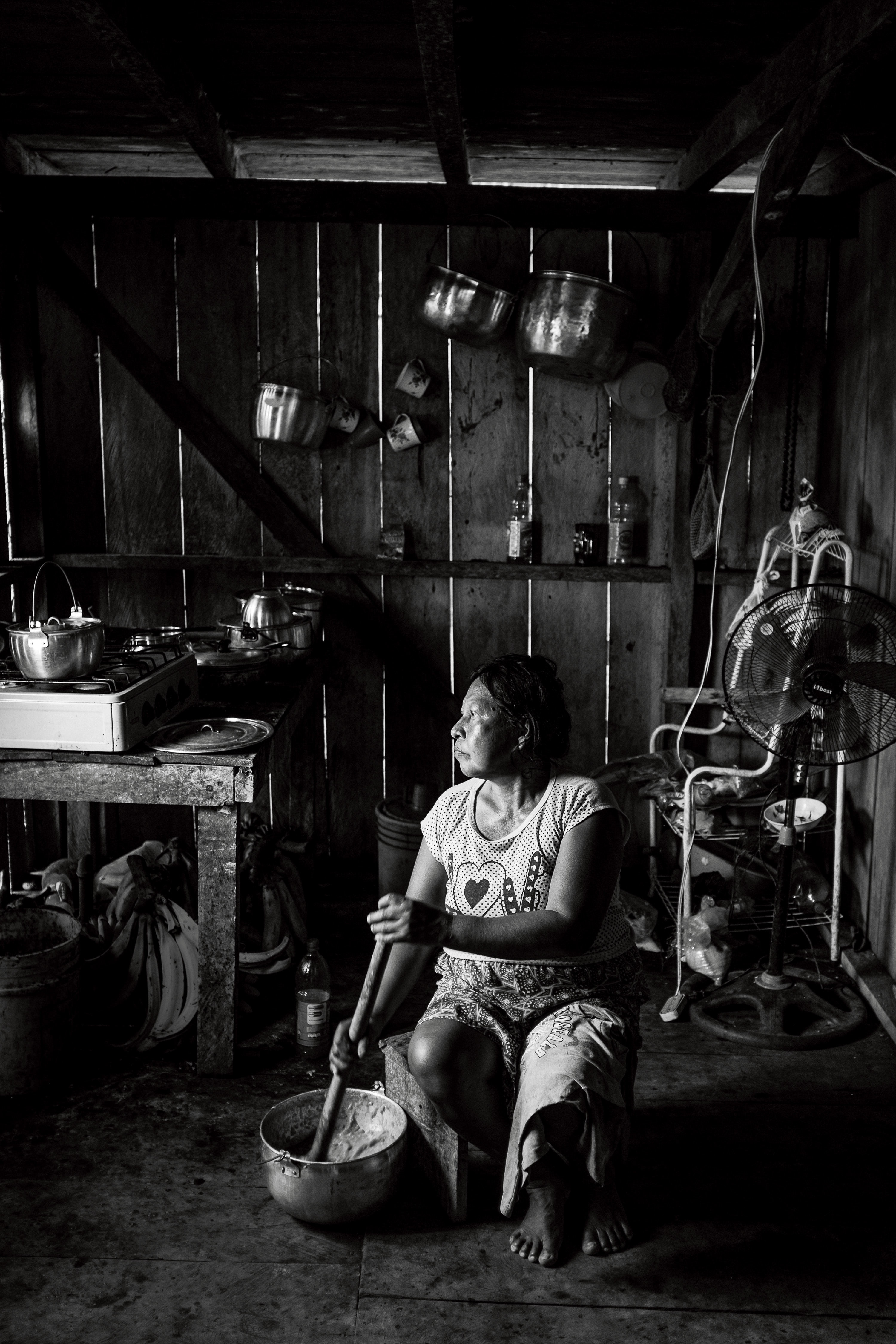
(Photo: Bear Guerra)
The more than 500 Cofán people who live in Dureno don’t fit most Western stereotypes of how native Amazonians are supposed to look or act. They don’t wear loincloths or paint their bodies. They don’t lounge around in hammocks and play wooden flutes all day. They crown their homes with zinc sheets rather than palm fronds. Potato-chip bags and soda bottles litter their soccer field (they don’t have a ritual plaza). Under a metal-roofed basketball court, children listen to the cumbia and reggaeton music that erupts from nearby homes. Teenagers spend more time staring at cheap knock-off smartphones than each other. To most outsiders, the Cofán don’t look indigenous — they look poor and defeated.
Alejandro Criollo, a Cofán elder, hunting in the forest behind his Dureno home. Alejandro is one of the few Cofán men who wear a traditional tunic every day.

(Photo: Bear Guerra)

(Photo: Bear Guerra)
But they are not a broken people. As an anthropologist who has been working with the Cofán for more than two decades, I have learned that their lives are marked by joy and purpose alongside sorrow and pain. Their world is full of cultural continuity, despite the destructive forces pressing in on it.The Cofán of Dureno speak their native language of A’ingae every day. They rely on shamans and plant medicines to maintain their health. Despite their devastated homeland, they continue to be hunters, fishers, and gardeners. They are also students, teachers, researchers, and entrepreneurs.
Like all Dureno residents, Alejandro needs money to survive. In the photo on the bottom left, he is working with both Cofán and non-Cofán men to build a “Millennium Community” in Dureno. The Ecuadorian government decided to use oil revenues to construct a housing complex for the people of Dureno. It includes modest homes for each family as well as potable-water and safe-sewage systems. Lucia Quenamá is Alejandro’s wife. She spends most of her days cooking food, washing clothes and dishes in the Aguarico River, and socializing with other women. In the photo on the bottom right, she is mashing ripe plantains to make cui’ccu, a sweet beverage that provides the majority of the calories the Cofán need to survive.
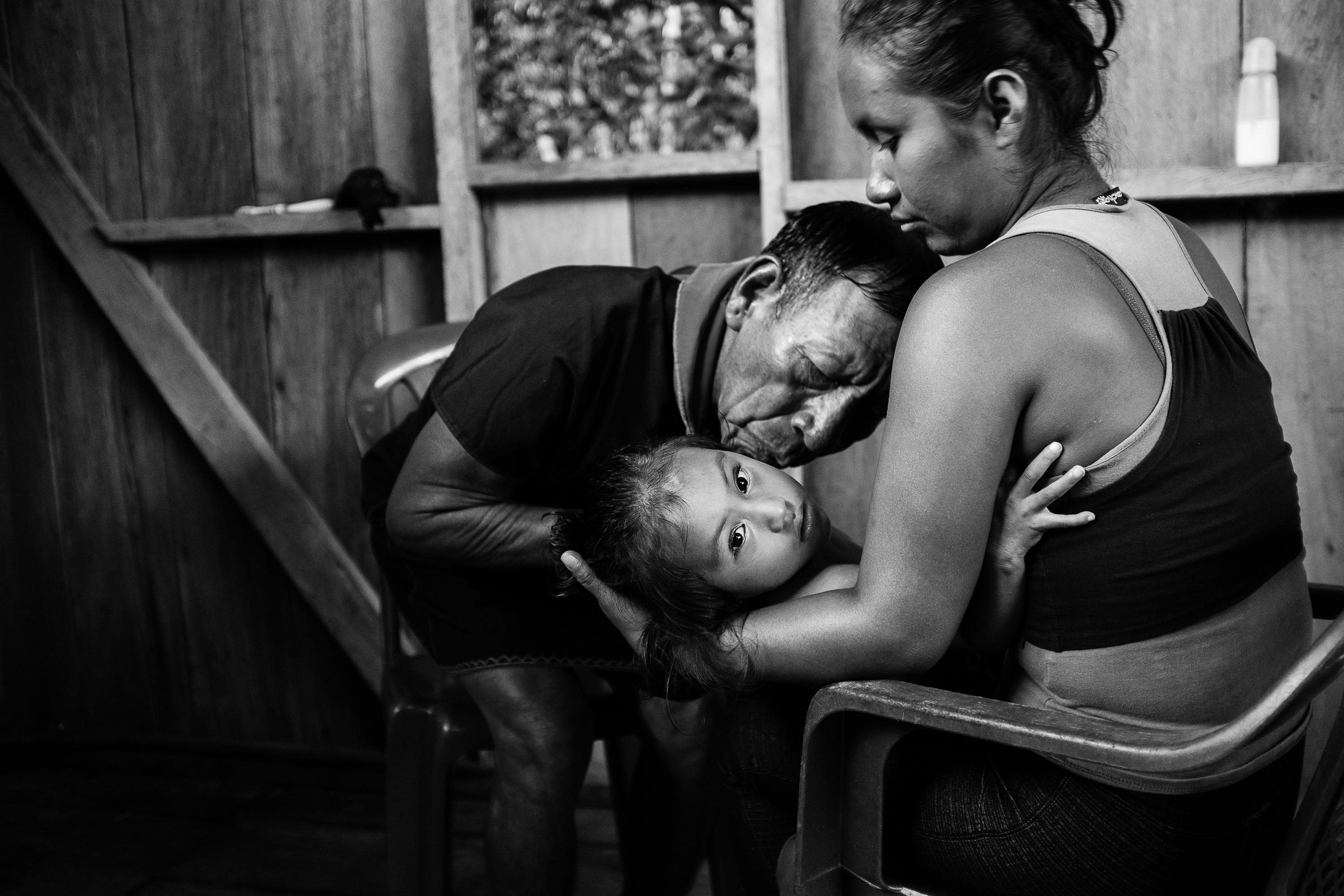
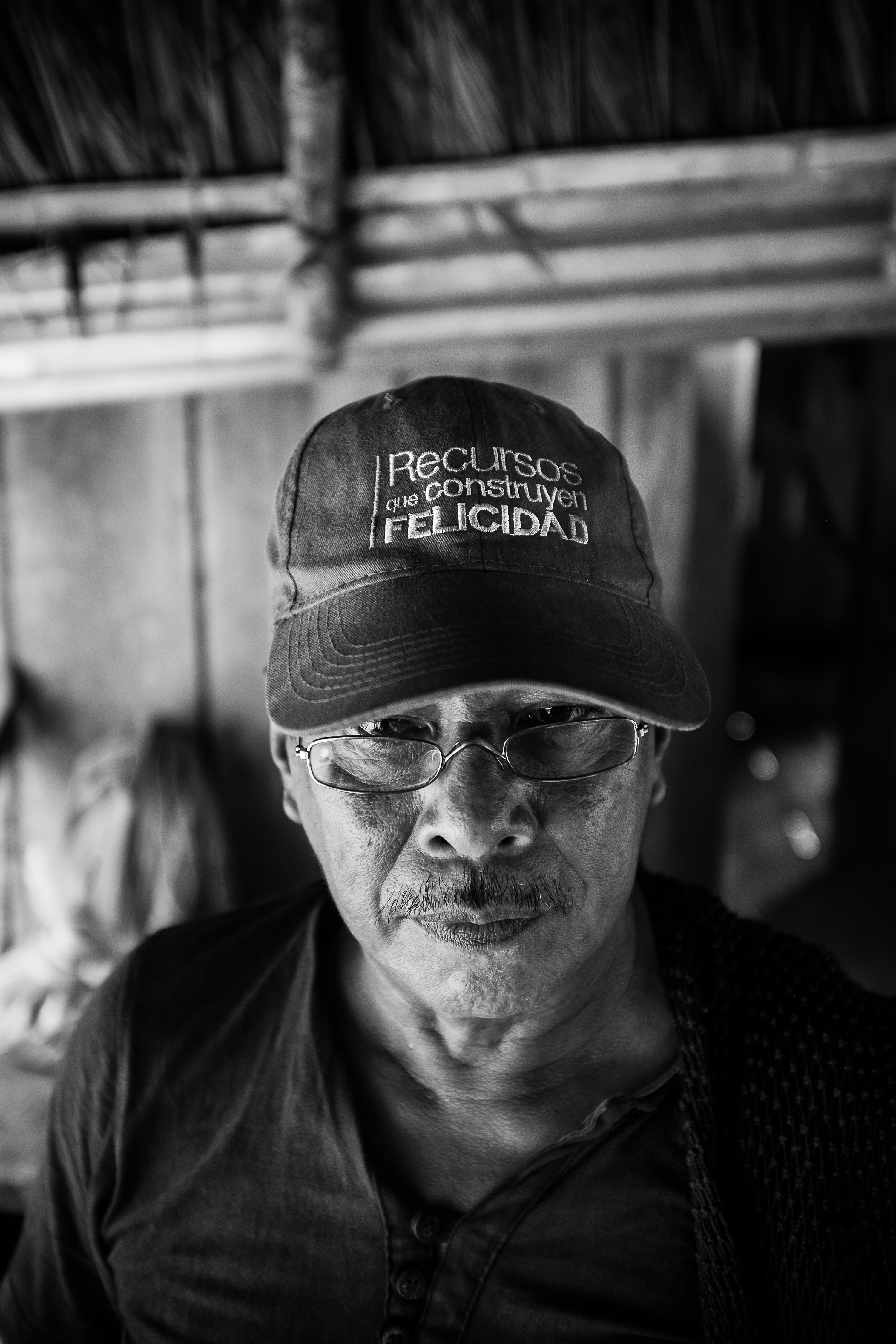
Perhaps more than anything, they are storytellers. And they have a wonderful sense of humor. In Dureno, it’s hard to go five minutes without hearing someone burst into laughter.
Cofán boys playing soccer in Dureno. Both children and young adults play soccer and volleyball nearly every afternoon.
As sightings of “uncontacted Amazon tribes” continue to titillate audiences in the developed world, the people of Dureno tell us something different about what it means to be a native Amazonian in the 21st century. They demonstrate the value of persistence, of adaptability, of sticking together and staying strong. After surviving centuries of violence, the last thing they plan to do is disappear.
